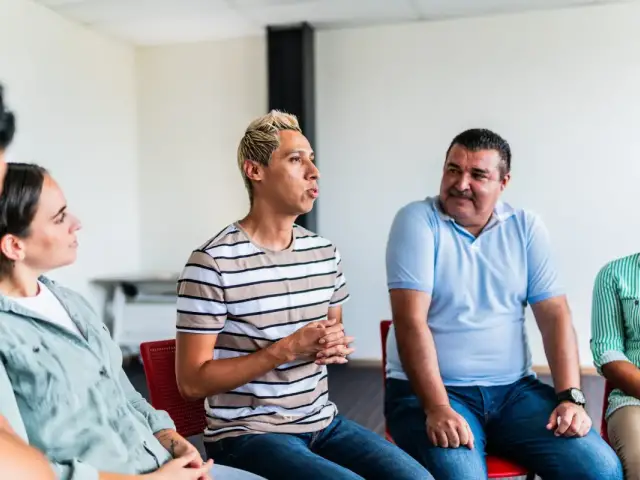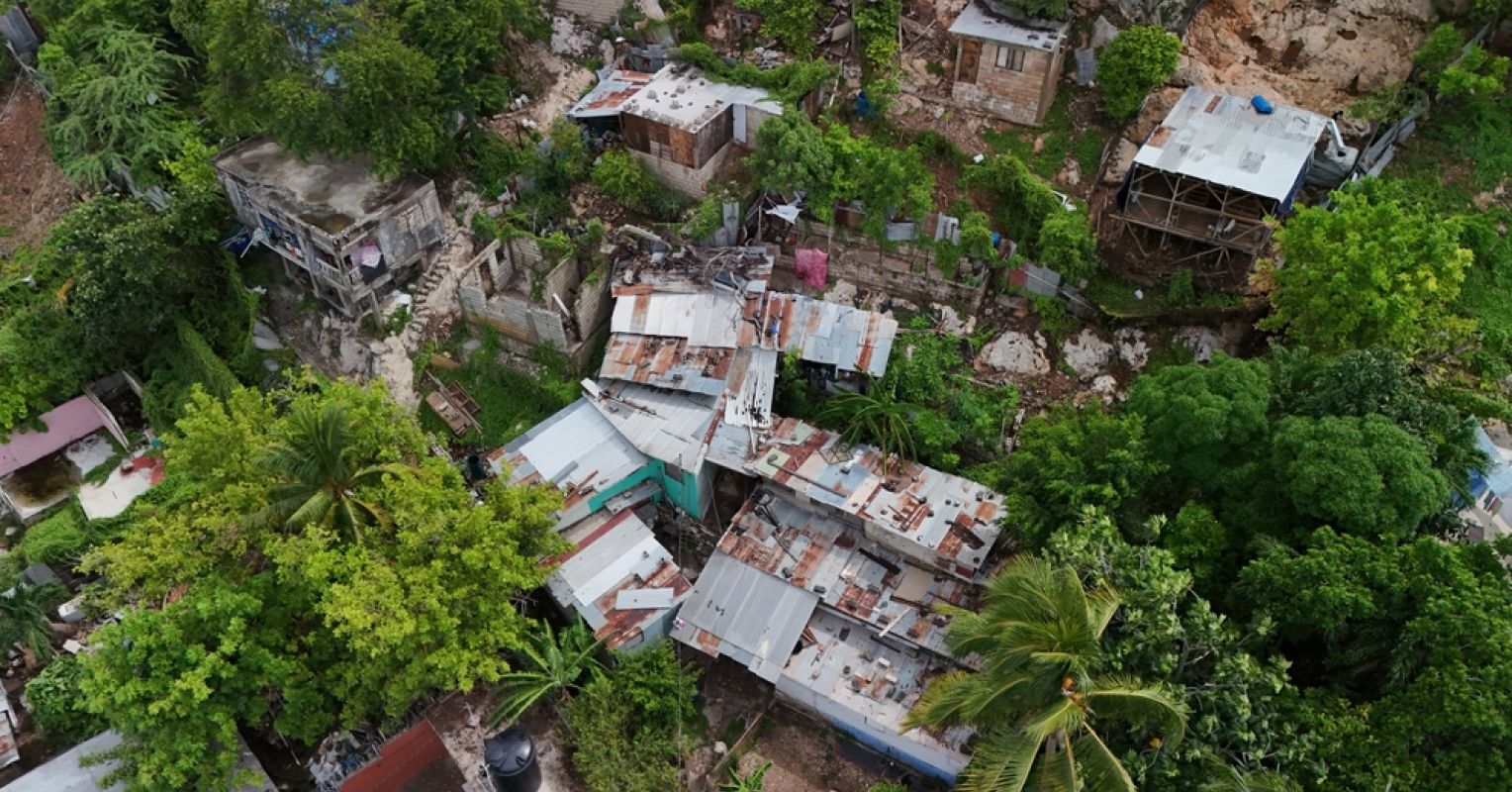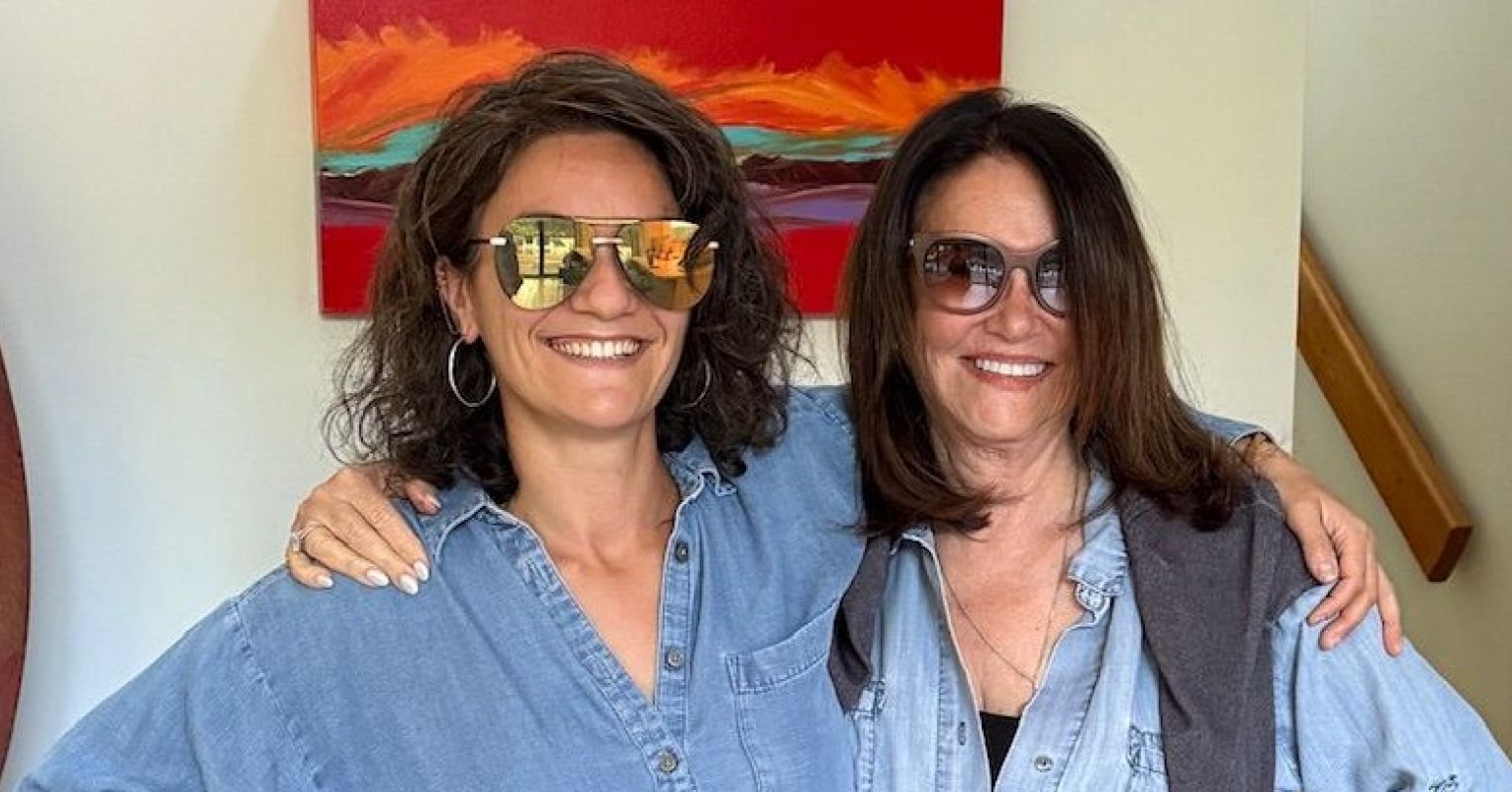In early January, a wave of immigration arrests in California’s Central Valley sparked fear across the state. Those real arrests spurred false reports of raids in cities like Oakland, heightening anxiety just days before President Donald Trump officially returned to office. Then, on his first day, Trump signed a series of executive orders targeting immigrants’ rights, including shutting down humanitarian parole programs, deploying the U.S. military to seal the borders, and an attempt to end birthright citizenship.
His policies, experts say, are meant to make life more difficult—not just for undocumented immigrants, but for those who are lawfully present, as well.
A 2025 study finds that one in five lawfully present immigrants say they or a family member have avoided daily activities like work or medical care due to fears of encountering law enforcement. These concerns are driving stress and anxiety—and accompanying symptoms like difficulty eating and sleeping. The same study shows that 61% of lawfully present immigrants worry about being detained or deported, compared to 33% in 2023.
X

Those fears may only deepen in the coming months and years, especially after the administration recently rescinded a 2011 policy that protected health care settings from immigration enforcement. Even going to the doctor can now feel risky.
Detained immigrants face worsening conditions, too. On April 3, the Justice Department ordered the Acacia Center for Justice to shut down several federally funded programs it deemed “no longer needed”—including the National Qualified Representative Program, which provides government-funded attorneys to detained immigrants with serious Mental health or cognitive disabilities.
The defunding marks a major rollback in legal protections. Without the program, immigration courts lose their only mechanism to assign government-funded attorneys to some of the most vulnerable people in detention.
Amid immigration attacks and panic, Mental health professionals in the Bay Area are trying to provide stability, culturally responsive care, and a safe space for communities living with fear and uncertainty.
“As providers, the best thing we can do is hold space and validate our clients’ experiences,” said Yanina Rivera Lopez, a Berkeley-based therapist. “That can be hard for some therapists, who may try to redirect the conversation. But for me, I focus on validating what they’re going through and then move into safety planning. We may not be able to stop what’s happening, but we can identify their specific fears and plan around them.”
The panic
While every Mental health professional reported a spike in fear and anxiety following the Central Valley immigration operation, many say those feelings have been building since the November 2024 election.

Yanina Rivera Lopez, a Berkeley-based therapist
Lopez, who serves Latino and immigrant clients, actively advocates for culturally responsive training to help providers better support clients navigating the impacts of systemic issues.
With so many policy changes, she says, there’s a growing uncertainty about where protections begin and end. The ambiguity, Lopez says, affects the trust-building process between a therapist and a client, especially as resources for victims of crime, violence, and exploitation (like T visas, which are temporary visas designed to protect victims of human trafficking) remain in flux and have always depended on shifting policies.
That uncertainty also fuels fear when navigating family conversations, Lopez says, especially around differing political views, a tension that’s common in Latino families as some lean more conservative. Even those who are documented can experience post-traumatic stress disorder or emotional distress in the current anti-immigrant climate.
“We need to create a space that is safe for our clients to come and talk about the political landscape, how it’s affecting them interpersonally, and having tools in your back pocket,” says Lopez. “Being open to engaging in these discussions, instead of redirecting it to old-school, traditional forms of therapy.”
As a therapist, Lopez says her role is to hold space for all of it, to meet people where they are, without trying to change their minds, and to offer unconditional regard while helping them explore where their emotions come from and how to stay attuned to them.

Andrés Salerno, a couples therapist in Oakland
Andrés Salerno, a couples therapist in Oakland, has noticed that the uncertainty caused by constant policy changes often strains personal relationships.
“The human brain wants to protect us, and oftentimes the way that it feels like it’s doing it is protecting us by ramping up our alarm system, our anxiety,” says Salerno. “It’s wanting to spring us into action. But the nature of anxiety can over-correct and kind of spin us off into a state of constant fear, where this fear of a perceived threat starts taking over.”
Salerno says it’s important for people to show themselves grace when navigating fear and anxiety during uncertain times. He encourages mindfulness techniques to help manage intense emotions while staying focused on safety. Without that balance, he added, fear can easily create a “feedback loop” of worry and conflict within relationships.
Salerno previously worked at Instituto Familiar de la Raza, a San Francisco organization that offers wraparound services, such as therapy, case management, and access to social workers who can help with non-therapeutic supports.
Through his experiences with the organization, he came to realize that caring for your Mental health within relationships, whether with a significant other or family, is just as important, since those connections are often where stress first surfaces and can be the hardest to navigate.
He recommends that immigrants seeking Mental health services start with a community-based center, where they can build what he calls “institutional trust.” However, he advises doing some research ahead of time, since not all centers may offer the specific type of care someone is looking for—like couples therapy, for example.
What organizations are doing
Mayra Barragan-O’Brien is a licensed marriage and family therapist and Mental health senior manager at Immigrants Rising. She says many organizations in the Bay Area have responded to Trump’s anti-immigration agenda by focusing on accurate information and support—rather than spreading fear or misinformation—in the face of attacks on immigrant communities.

Mayra Barragan-O’Brien, a licensed marriage and family therapist and Mental health senior manager at Immigrant Rising
This includes preparing for the potential impact of executive orders, coordinating resources, and creating coalitions with other organizations to connect people to “Know Your Rights” workshops and legal support.
“Even in the midst of everything that’s going on, what’s going on is not who we are,” says Barragan-O’Brien. “We want to remind them of who they are and the power that they have within themselves and the power that we have as a community, because sometimes people may feel powerless. Regardless of what happens, we are going to find ways to keep each other safe, to keep each other informed, and to keep each other well.”
Barragan-O’Brien says that during crises like enforcement operations, people don’t usually turn to therapy or support groups first—they focus on immediate, tangible steps to stay safe. Information is their top priority: what measures to take, what tools they need, and how to protect themselves and those around them.
In response to the current political climate, Immigrants Rising expanded its wellness groups to give people space to process fears and questions like “I feel stuck—I don’t know how to move forward or if it’s even worth trying.”
Immigrants Rising also runs a Mental health Connector program, which helps undocumented college students get matched with Mental health providers. It also partners with a network of 70 to 80 licensed clinicians who offer pro bono counseling.
“A lot of undocumented individuals want to know that the person that they see in front of them is able to understand them, maybe that they can speak their language, that they understand the undocumented experience and the complexities of it, that their experience is not invalidated, and that they don’t have to educate the person that’s in front of them,” says Barragan-O’Brien.
Stephanie Chiquillo, a clinical psychologist and the only Mental health clinician at CARECEN SF, says that for immigrants with health coverage, the usual path to Mental health care is through a primary care provider or private insurance. But even then, Spanish- and Indigenous-language speakers often struggle to find services in their language.
In San Francisco, and in much of the Bay Area, low- and moderate-income residents on Medi-Cal can call a centralized behavioral health line for Mental health referrals, which are often directed to community-based clinics specializing in specific populations.
But many of these services are overburdened, Chiquillo says, with long waitlists that can delay care for months. Often, immigrants in crisis first speak to their primary doctor, who may connect them to a Mental health professional for triage, but the gap between that initial contact and actually beginning one-on-one therapy can be long and uncertain.
In her role, Chiquillo provides clinical guidance and oversees the caseloads of care managers and staff who work directly with people receiving services at CARECEN SF. She’s often consulted on Mental health crises or concerns and offers one-on-one clinical supervision, helping care managers discuss cases in depth and determine the best interventions and practices.
“Some of the landscape that we’re seeing is that there’s a disconnection between the initial crisis moment and whether they can engage, there’s a lot of barriers for immigrants to get Mental health,” says Chiquillo. “They fall on through the cracks and our Mental health system right now is more of a Band-Aid.”
Chiquillo says another gap in Mental health care is the lack of support for people who don’t meet the clinical criteria for treatment but still aren’t feeling well. She emphasized the importance of focusing on prevention and supporting individuals who are motivated to seek help, even if their symptoms aren’t yet severe, with the goal of keeping them from reaching that point.
The stigma of Mental health care
Salerno says many immigrants may avoid seeking therapy out of fear that simply being “on the record” could have consequences for their documentation status or future opportunities.
Beyond that, cultural stigma often plays a role, especially for people from backgrounds where traditional psychotherapy isn’t commonly used or openly discussed.
“There’s still this misconception,” Salerno says, “that therapy is only for people with serious problems, that if you’re going, something must be really wrong with you.”
Lopez says she’s seen colleagues struggle in agencies where acknowledging these fears and systemic stresses is discouraged.
“Clients tell me this disconnect is frustrating, especially when their lived reality is shaped by forces beyond their control,” says Lopez. “So, holding that space—the duality, the systemic context, the relational connection—is essential in this work.”
Chiquillo says that language remains a major barrier for monolingual communities seeking Mental health care, especially as the field becomes increasingly reliant on technology, which often leaves non-English speakers behind, from the moment they reach out for help to actually receiving it.
She also notes the unique connection that can form when therapists share similar immigrant roots or overlapping histories with their clients. “There’s something deeply meaningful in that shared grief and radical genuineness,” she says, even when the therapist and client come from different cultures.

Johana Marmolejo Mora, an Oakland-based trauma-informed Mental health coach
Johana Marmolejo Mora, an Oakland-based trauma-informed Mental health coach, combines professional training with lived experience to support her community.
Originally from Colombia, she immigrated to New York at age 10 and struggled with feelings of not belonging, a journey that shaped her mission to help others navigate similar challenges. She offers sliding-scale services and approaches her work with deep cultural awareness.
Mora says many of her previous clients have wrestled with the stigma around being labeled a “good” or “bad” immigrant, which often deepens feelings of disconnection and uncertainty. She helps them navigate that tension by encouraging self-reflection on identity, belonging, and the emotional weight of worrying about loved ones, immigration status, job security, and loneliness.
“How can we find support before the feeling of burnout?” says Mora. “Not everybody wants a healing modality through coaching or therapy. Some folks like support groups or other different ways. How can we speak to the community and folks in different generations and see what they need, or what kind of healing they would like?”

Celina Gonzalez, a therapist based in San Francisco
Celina Gonzalez, a therapist based in San Francisco, takes that same approach in her work with immigrant communities from a range of socioeconomic backgrounds. She meets clients where they are, offering sliding-scale or low-fee services to make care more accessible. In the past, she’s also provided U Visa evaluations, waivers, and other forms of support for immigrant clients navigating the legal system.
“When we’re up against broader, multilayered systems of oppression—especially when those forces are tied to our identities—it can shake a person’s sense of safety,” Gonzalez says. “That fear response can show up anywhere: at work, in institutions, in daily life. It can impact concentration, increase hypervigilance, and create a constant state of alert, because it’s not just stress—it’s discrimination and violence rooted in being an ethnic minority.”
Navigating that uncertainty, Gonzalez says, starts with recognizing that while so much is out of our control, we still have power over the small, grounding rituals and connections we build into our daily lives.
Many immigrants, says Gonzalez, slip into problem-solving mode, trying to be the steady one for others, while not always having a place to fully acknowledge what it means to carry that emotional weight. In those moments, she says healing can begin with simple but profound practices: naming emotions, validating experiences, sharing stories, and drawing strength from cultural wisdom and the resilience of ancestors who have survived deep trauma before us.
Gonzalez says the work often involves guiding people to slow down and ask themselves questions, to notice the fear, give it language, and pay attention to where it lives in the body.
This process, she says, can lead to what she calls radical acceptance, the skill of acknowledging the facts of the present moment, even when we don’t approve of them or feel deeply unsettled by them.
“Can we recognize that an entire history may have led to this moment—and still find a way to breathe, ground ourselves, and meet whatever comes next with eyes open?”













